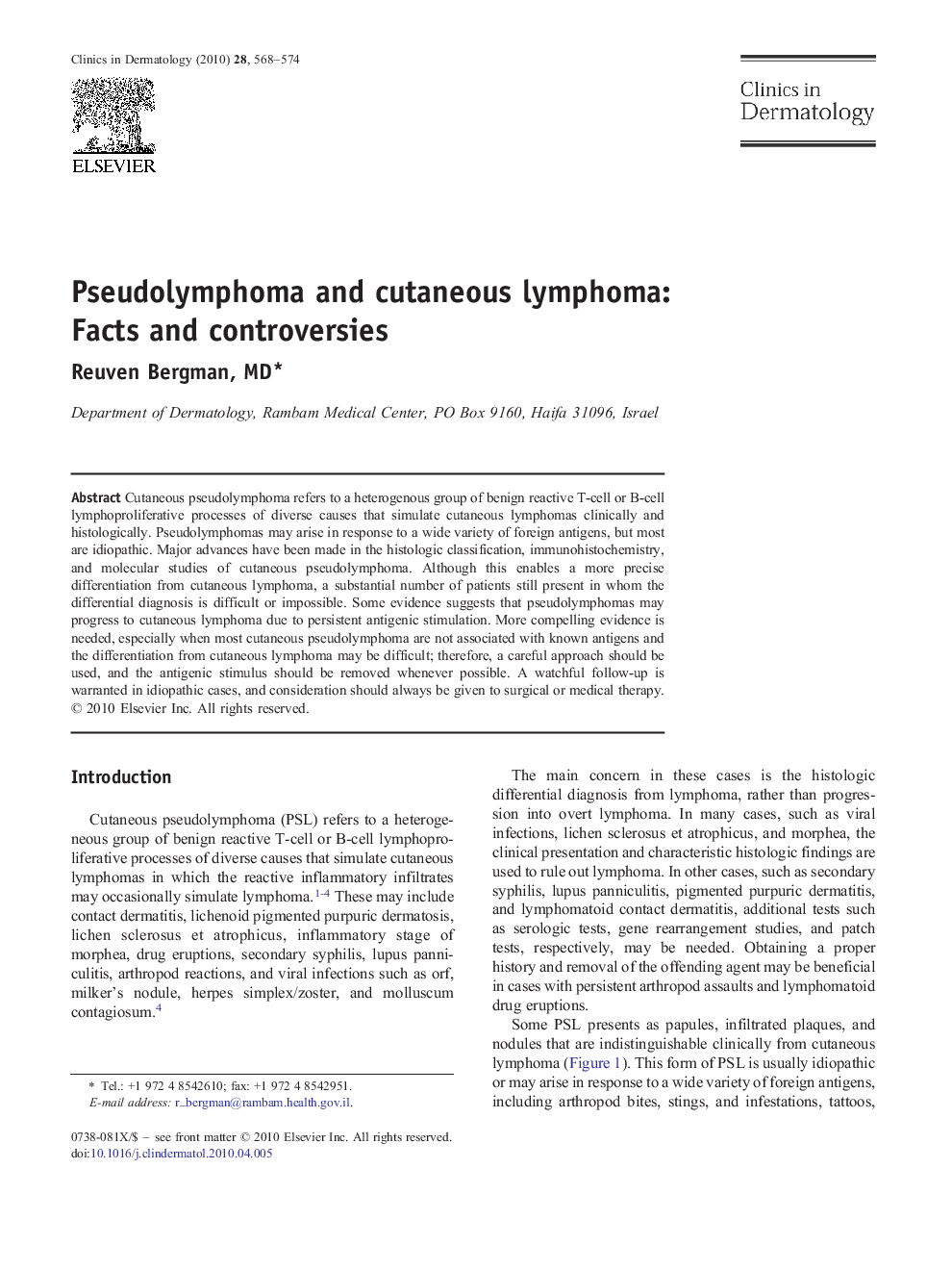| Article ID | Journal | Published Year | Pages | File Type |
|---|---|---|---|---|
| 3194806 | Clinics in Dermatology | 2010 | 7 Pages |
Cutaneous pseudolymphoma refers to a heterogenous group of benign reactive T-cell or B-cell lymphoproliferative processes of diverse causes that simulate cutaneous lymphomas clinically and histologically. Pseudolymphomas may arise in response to a wide variety of foreign antigens, but most are idiopathic. Major advances have been made in the histologic classification, immunohistochemistry, and molecular studies of cutaneous pseudolymphoma. Although this enables a more precise differentiation from cutaneous lymphoma, a substantial number of patients still present in whom the differential diagnosis is difficult or impossible. Some evidence suggests that pseudolymphomas may progress to cutaneous lymphoma due to persistent antigenic stimulation. More compelling evidence is needed, especially when most cutaneous pseudolymphoma are not associated with known antigens and the differentiation from cutaneous lymphoma may be difficult; therefore, a careful approach should be used, and the antigenic stimulus should be removed whenever possible. A watchful follow-up is warranted in idiopathic cases, and consideration should always be given to surgical or medical therapy.
